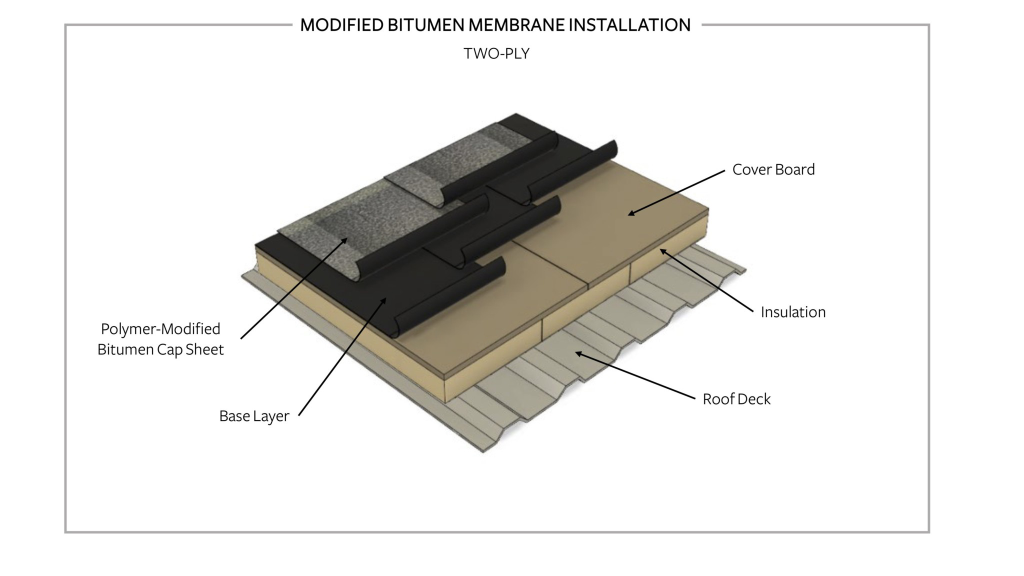A modified bitumen roof, often referred to as mod-bit, represents an advancement in roofing technology primarily used for low-slope or flat roof structures. Unlike traditional built-up roofing systems (BUR), which rely solely on layers of asphalt and felt, modified bitumen incorporates polymer-modified bitumen for enhanced durability and performance.
This roofing material consists of asphalt or bitumen mixed with modifiers like styrene-butadiene-styrene (SBS) or atactic polypropylene (APP). These additives improve the elasticity, flexibility, and weather resistance of the bitumen, enabling it to withstand temperature changes, UV exposure, and mechanical stress without deteriorating.
There are two main types of modified bitumen membranes:
- SBS (Styrene-Butadiene-Styrene): SBS-modified bitumen membranes have a rubber-like quality, offering excellent flexibility and elongation. This makes them suitable for areas with extreme weather conditions where building movement and thermal expansion/contraction are significant factors.
- APP (Atactic Polypropylene): APP-modified bitumen membranes have a plastomeric nature, providing enhanced heat resistance and stability. They are often installed using heat-welding or torch application methods, creating a strong, seamless, and watertight roofing system.
Installation of modified bitumen roof assemblies can be done through various methods, including torch application, hot asphalt mopping, cold adhesive application, or self-adhered membranes. These roofs are typically installed in multiple layers, sometimes with reinforcement like fiberglass or polyester, to achieve the desired level of protection and durability.
Modified bitumen roofs offer several advantages, such as excellent waterproofing capabilities, superior flexibility to resist cracking, increased durability and longevity, resistance to UV radiation and weathering, and ease of repair and maintenance.
Overall, modified bitumen roofing systems are favoured for their reliability and performance in diverse environmental conditions, making them a popular choice for commercial, industrial, and residential buildings with low-slope or flat roof designs.

